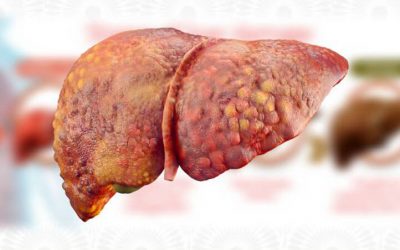Early Warning Signs of Nerve Damage You Shouldn’t Ignore
Written by: Prof.Dr.N. Muthukumar M.Ch.M.N.A.M.S.,F.I.C.S.,F.A. Neuro Surgeon.
Reviewed by: Dr. Sathish Devadoss, M.B.B.S.,M.S(Ortho).,M.ChOrtho(UK)FASIF(Aust) Orthopedic Surgeon.
Table of Contents
- Introduction
- What Counts as Nerve Damage — and Why Early Detection Matters
- Early Nerve Damage Signs You Shouldn’t Ignore
3.1 Sensory Nerve Symptoms
3.2 Motor Nerve Symptoms
3.3 Autonomic Nerve Symptoms
3.4 Less-Common but Important Early Signals
4. Why These Signs Matter — Connecting to Nerve Health
5. B-Complex Supplements, Pain Relief Gels & Diabetic Foot Care
5.1 B-Complex Supplements
5.2 Pain Relief Gels
5.3 Diabetic Foot Care
6. What You Can Do Now
6.1 Monitoring Symptoms
6.2 Prevention Strategies for Different Risk Levels
Primary Prevention – Protecting High-Risk Individuals
Secondary Prevention – Managing Existing Conditions to Slow Progression
Tertiary Prevention – Preventing Complications and Disability
7. Regular Follow-up
8. Conclusion
Introduction
Imagine waking up one morning with a faint, unfamiliar tingling in your toes. You shrug it off, but days later it spreads up your feet—and then you begin to notice odd sensations that you’ve never had before. Could this be more than just fatigue or over-standing? Might it be the early whisper of nerve damage? While many of us may associate nerve issues only with dramatic symptoms like paralysis or excruciating pain, the truth is that nerve health often gives subtle signals before things get serious. Recognising those whispers early, when they’re still quiet, can make a real difference.
Are you curious to know about your nerve health? Read the article.
What Counts as Nerve Damage — and Why Early Detection Matters
Nerves are the body’s signal-wires: sensory nerves tell you when something is hot, cold, or sharp; motor nerves tell your muscles to move; autonomic nerves run the background systems (blood pressure, digestion, sweating). When these begin to malfunction, you get nerve damage — medically often called Peripheral neuropathy when the peripheral nerves are involved.
Here’s what the research tells us:
- Early neuropathy often presents with sensory alterations (numbness, tingling, burning) before motor weakness becomes obvious.(1)
- If left unchecked, nerve damage can lead to serious complications: falls, ulcers (especially in diabetic feet), infections, loss of function.(2)
- From a pathophysiological standpoint, nerve damage can involve axon degeneration, myelin (insulating layer) damage,(3) or combinations thereof.
Hence, early signs matter — because the sooner you act, the more you can slow or even halt progression and prevent complications.
Early Nerve Damage Signs You Shouldn’t Ignore
Here are some key early signals — grouped by the type of nerve fibres or systems affected — with extra bits many people might not know.
1. Sensory Nerve Symptoms
These are among the first signs of peripheral nerve trouble (sensory means you feel things).
- Even-mild tingling (“pins and needles”) in your toes, fingers. The classic “stocking and glove” pattern: first feet, then hands.
- Numbness or reduced ability to feel temperature, pain or vibration. For example, you might step on something hot without realising.
- Burning, prickling, stabbing pain (especially at night). Not just “ache” but neuropathic descriptors.
- Heightened sensitivity – even light touch or a bedsheet might feel painful (allodynia) or normal pain feels exaggerated (hyperalgesia).
Less-well-known nuance:
- Early on, you may simply feel “as if you’re wearing socks/gloves” even when you’re not.
- Also, small-fibre damage (those that carry temperature and pain) may occur even before large-fibre signs (vibration sense, reflex loss) appear.
2. Motor Nerve Symptoms
When nerves that control muscles start getting affected:
- Subtle weakness: you may notice you’re a little slower when climbing stairs, or your grip is a bit weaker.
- Muscle cramps or twitching (sometimes an early sign of motor-nerve involvement).
- Loss of reflexes (knee-jerk etc) over time.
Less obvious point:
You may not feel weakness consciously until later; you might simply notice increased fatigability or frequent tripping/falling (balance issues) because sensory input is already poor.
3. Autonomic Nerve Symptoms
These are nerves you don’t consciously control (blood pressure, digestion, bladder, sweating). Early signs here are often overlooked:
- Dizziness or fainting when you stand up (orthostatic hypotension) due to nerve damage in blood-pressure regulation.
- Unexpected sweating changes: sweating too much or too little.
- Sudden digestive or bladder changes: feeling “full” after a few bites, constipation or diarrhoea for no obvious reason.
- In people with diabetes: lack of warning symptoms of hypoglycaemia (because the autonomic nerves that generate “shaky, sweaty” feeling are damaged).
4. Less-Common but Important Early Signals
- If you have diabetes, foot ulcer or infection risk increases once sensation is impaired — but the earliest damage may show only as slight sensory loss.
- Lab tests may show vitamin deficiencies (B12, B6, B1), thyroid issues, or other metabolic causes BEFORE major nerve damage sets in. Recognising and correcting these may halt progression.
- Rare neuropathy subtypes: Some forms don’t follow typical “stocking/glove” pattern. These require specialised diagnostics to catch early.
Why These Signs Matter — Connecting to Nerve Health
Recognising early nerve damage ties directly into promoting nerve health, and preventing further injury. Several key mechanisms and interventions matter:
- Metabolic control: Poor control of blood sugar, hypertension, toxins (like alcohol) accelerate nerve damage. If early signs appear, improving control can slow progression.
- Nutrition & B-vitamins: Some nerve damage ties to deficiencies in B-vitamins (B12, B6, B1) or other nutrients; these are part of a broader “nerve health” strategy.
- Foot care: Especially in diabetes, early sensory change means you might not feel an injury on your foot — thus diabetic foot care (regular inspection, protective footwear) becomes crucial.
- Pain relief and symptomatic treatments: Once pain appears, treatments like topical gels, systemic medications, and lifestyle interventions help. The earlier you start, the better the quality of life.
- Structural/nerve repair support: In more serious or traumatic nerve injury, early interventions (physical therapy, splints) aid recovery.
B-Complex Supplements, Pain Relief Gels & Diabetic Foot Care
B-Complex Supplements
- Since B-vitamin deficiencies (especially B12, B6, B1) are known causes or contributors of neuropathy, a well-formulated B-complex can support nerve health (especially if you’re found to be low).
- Vitamin B12 deficiency may silently damage nerves long before symptoms.
- Key caution: High doses of some B-vitamins (e.g., B6) can themselves cause neuropathy if excessive — so it’s not “more is always better”.
- Tip: If you have early sensory signs (tingling, mild numbness) check your B-vitamin levels and discuss B-complex supplementation as part of the strategy.
Pain Relief Gels
- Early nerve pain (e.g., burning, stabbing, tingling) can be distressing. Topical pain relief gels (for example containing lidocaine, capsaicin) can be part of the regimen.
- Using a pain relief gel doesn’t fix the nerve damage cause, but alleviates symptoms, improving comfort and enabling better sleep/mobility.
- Tip: If you notice nerve-type pain (sharp, electrical, burning) especially at night, ask your doctor whether a topical gel is appropriate early — earlier symptom control may slow progression of discomfort.
Diabetic Foot Care
- If you have diabetes or are at risk (pre-diabetic), early sensory nerve damage in feet means you may not feel injury, pressure, or blister.
Key actions:
- Inspect feet daily (look for cuts, blisters, redness).
- Wear well-fitting shoes with good cushioning.
- Avoid walking barefoot, especially outdoors/uneven surfaces.
- Manage blood sugar, blood pressure, and lipids.
Tip: If you detect early signs (tingling, reduced sensation) in your feet, ask your doctor about a formal foot-care plan — this proactive approach can prevent major complications later.
What You Can Do Now
Here’s a simple action plan if you suspect early nerve damage (or want to safeguard nerve health):
Monitor symptoms
Ask yourself: Have I had new tingling/numbness in feet/hands? Burning or stabbing pain especially at night? More sensitivity to touch? Dizziness when standing?
Schedule a medical check-up
- Labs: Blood glucose/HbA1c, B12, B6, B1, thyroid function, kidney/hepatic profile.
- Ask for a neurological evaluation if persistent symptoms — early referral means more options.
Lifestyle + Nerve-Health Support
- If you’re low on vitamins → consider B-complex (under supervision).
- Use pain relief gels if symptomatic, to reduce suffering and improve mobility.
- If diabetic or pre-diabetic → implement dedicated foot-care routine, good glycemic control, protective footwear.
- Protect your nerves from repeat injury or pressure (avoid prolonged limb compression, poor posture).
Layered Prevention for Different Risk Levels
Even within nerve health, prevention can happen at three different stages, depending on where you stand:
If you have a family history of neuropathy or chronic conditions like diabetes — your focus should be on preventing onset.
- Maintain a balanced diet rich in B-vitamins and antioxidants.
- Limit alcohol, avoid smoking, and keep an active lifestyle to maintain circulation.
- Regularly check fasting glucose and vitamin B12 levels even before symptoms start.
(This is what doctors call primary prevention — stopping nerve damage before it begins.)
If you already have risk factors or an early diagnosis — focus shifts to detecting and controlling early nerve dysfunction.
- Regular screening for neuropathy (monofilament testing, vibration sense tests).
- Early treatment of deficiencies or metabolic causes like diabetes and thyroid disorders.
- Consistent use of protective footwear and monitoring small sensory changes.
If you’re already living with established nerve damage — the goal becomes preventing complications and improving function.
- Use physiotherapy, occupational aids, and pain-relief options (gels, medications).
- Focus on diabetic foot care to avoid ulcers and infections.
- Regular follow-up with neurologists to monitor disease course and adjust treatment.
Regular Follow-up
- Reassess symptoms every few months.
- Consider referral for nerve-conduction studies if diagnosis is unclear.
- Keep a personal log of changes in sensation, strength, or pain patterns — early notice helps doctors track progress better.
Conclusion
Your nerves may not send shouting alarms at first — they send soft taps: “Hey, I’m stressed,” or “Something’s off here.” Recognising those taps means you get to act before the full siren. By paying attention to early signs (sensory changes, subtle weakness, autonomic hints), leaning on nerve-health supports (vitamins, gels, foot-care), and working with your healthcare provider, you shift from reactive to proactive.
References:
- Neuropathy – Oct 15, 2022 – https://www.ncbi.nlm.nih.gov/books/NBK542220/
- Diagnosis and Management of Diabetic Foot Complications – 2018 Oct – https://www.ncbi.nlm.nih.gov/books/NBK538977/#s1
- Nerve Injury, Axonal Degeneration and Neural Regeneration: Basic Insights – 2006 Apr- https://pmc.ncbi.nlm.nih.gov/articles/PMC8098499/











